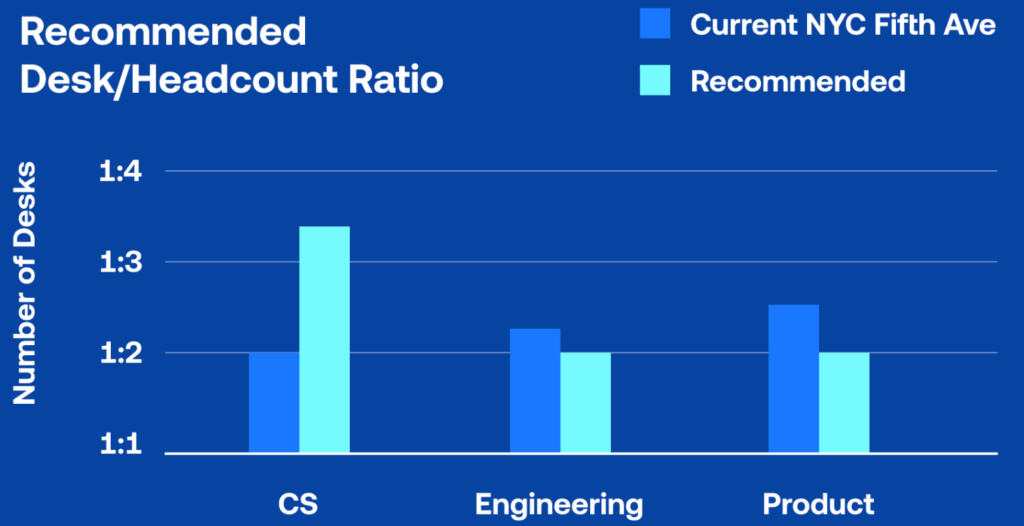The inconsistent nature of hybrid work schedules can make it incredibly challenging to know how many workstations are ideal for your workplace.
Challenging, but not impossible — if you measure how people use your space. There are a few ways measuring your space can help you determine how many desks your employees need.
By the neighborhood
Measuring the average utilization of a neighborhood helps you understand if there’s too much or too little space for a specific team.
Tip: It’s better to measure the trending utilization of a space over time because the current peak or average utilization may not represent a broader pattern in behavior.
Below shows the utilization rate (compared to capacity) of the workstations found in the Engineering and Customer Success neighborhoods over the past six months.

The utilization rate of the Customer Success team is steadily increasing, while Engineering remains hovering at around a 25% utilization rate.
Why this matters
This data tells you that Engineering doesn’t need more desks. In fact, they would probably be fine with fewer desks (although perhaps not happy).
Meanwhile, CS is nearing full utilization. Whether it’s headcount growth, an in-office mandate, or something else, CS uses its space more than Engineering does. Clearly, they’d benefit from more dedicated workstations.
By the space type
Do you have the right balance between workstations and conference rooms?
Comparing the utilization of both space types can reveal the answer.
The chart below, for example, showcases the percentage of time both desks and meeting rooms on one floor are used over the course of one week:

The desks on this floor are used less than half of the time, while meeting rooms are used 65% of the time.
Why this matters
Data clearly indicates that the primary use of this floor is for meetings. Most workstations go unused at any given time of the day. It might be worth turning some of those workstations into dynamic spaces with reconfigurable furniture.
That way:
- Employees can create the experience that suits their needs at that moment (whether it’s head-down work or a quick scrum)
- You can alleviate some of the pressure from your existing meeting rooms
Staying true to your desk/headcount ratio
Many workplace leaders have pre-determined desk/headcount ratios for each team. By continuously measuring your workplace, you can ensure that each team safely falls within its desk/headcount ratio.
In the example below, Engineering is nearing its ratio limit, while CS has plenty of room to spare.

Why this matters
This data can help you reassign workstations to where they’re needed most. In this case, Engineering clearly could use a few more workstations.
The future of work will be powered by data
Our relationship with physical space has changed forever. There is no future in which we don’t measure how people use and interact with our spaces. How much do those spaces cost? How much energy do they consume? Does the space improve productivity and personal well-being?
The built environment has needed an overhaul for generations — the pandemic has merely cast a spotlight on the problem.
By measuring our evolving relationship with physical space, we can create better, more efficient spaces for our people — and the planet.
Learn more about how we can reshape cities by reshaping workplaces here.
